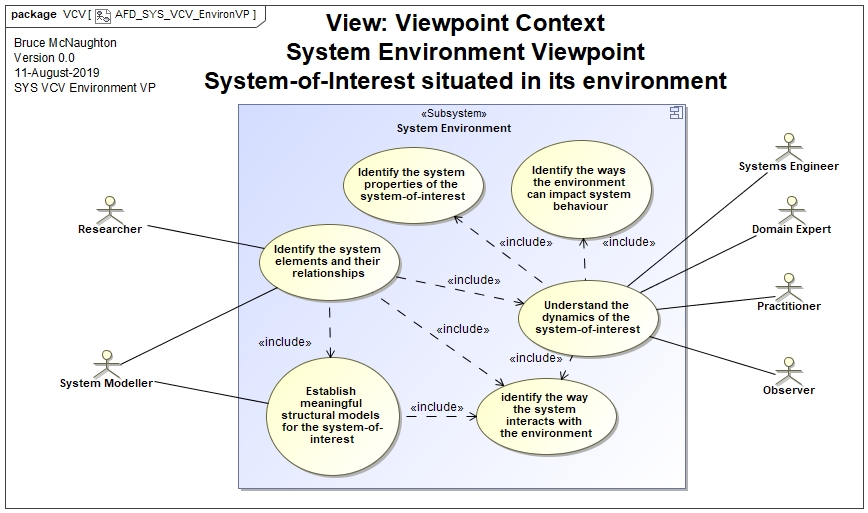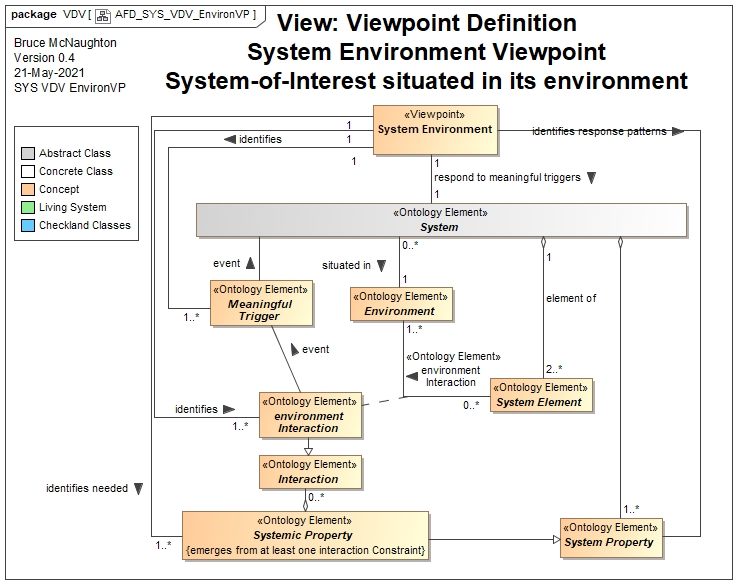System Environment Viewpoint
Description
This viewpoint provides the instructions to create the System Environment View in a System Description.
The description of the environment provides the context for the system-of-interest. This context includes any external systems that impact or interact with the system-of-interest. This context may also be shaped by the system-of-interest through the various interactions of the system.
The key aspect of the environment is the value delivered by this system-of-interest to the environment.
Rationale
This viewpoint is necessary to ensure that the impact of the environment on the system-of-interest and the impact of the system-of-interest on the environment is understood.
This two way interaction is the essence of the fit of the system-of-interest and the environment. This mutual causality establishes a level of interdependence both horizontally and vertically in the context of other systems.
The environment may also place constraints on the system-of-interest. These constraints are important looking at any of the capabilities / functions of the system.
Stakeholders and their Concerns

Ontology Concepts and System Descriptions

Models
The models that can be used to describe how the system-of-interest fits within the environment are:
- Conceptual Models (concepts and relationships) of other systems in the environment.
- The behavioural models can also be used in this section to support the development of the behavior view:
These models help identify triggers and interactions (including interfaces) to systems in the environment.
Steps to Create the View
- Identify or create a conceptual model of the context where the system-of-interest is situated.
- Identify systems in the environment
- Identify the system relationships for the relevant systems in the environment (logical model of environment)
- Identify the triggers and the resulting system interactions within the environment (this can look like the behavior (structural changes) view).
- Create any of the behavioural diagrams (if necessary) .. needed for the behavioural view.
- Review the various diagrams.
Correspondences
- There should be alignment with the environmental interactions and the various system properties.
- No new functions or properties should be identified
- All interactions of systems may have corresponding interactions with the relationships identified in this view.
Examples
Sources
UML References
Notes
Provide notes and background information to track any changes or other information.